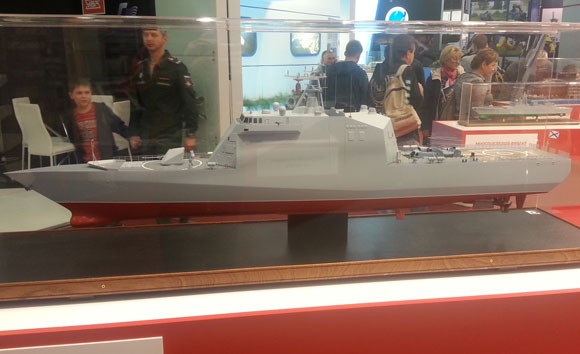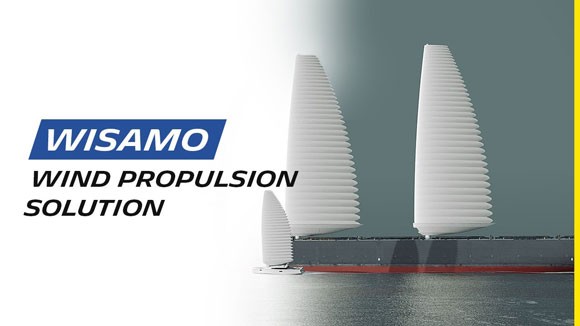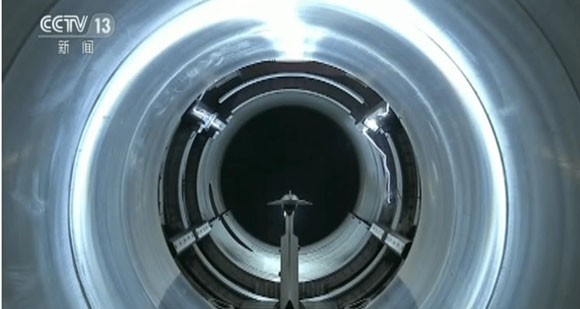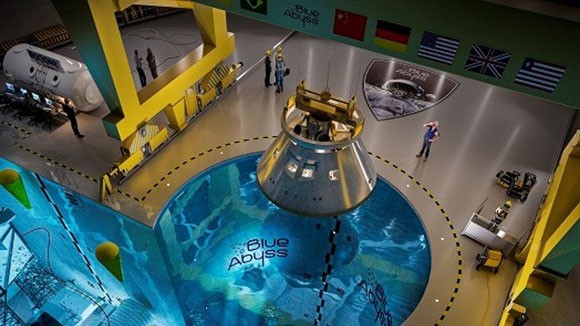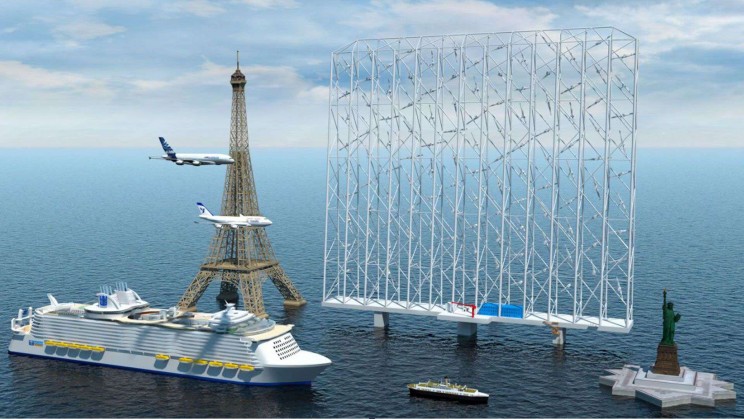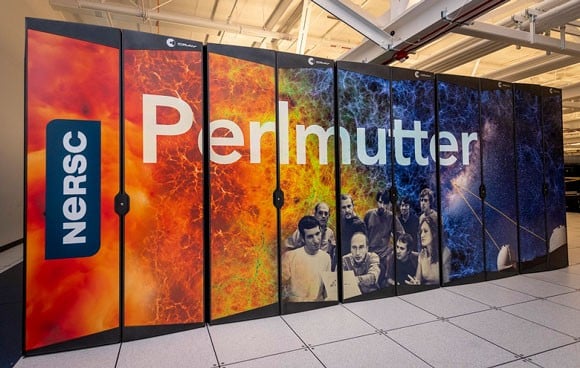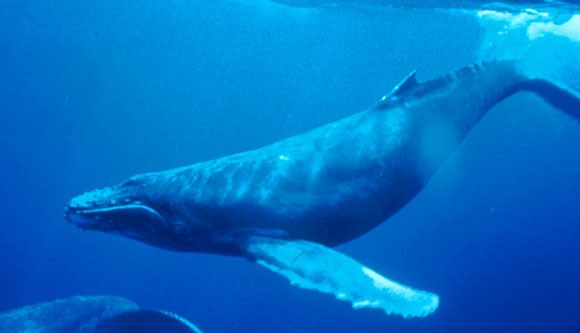These transport, energy and technology innovations – some far-sighted, others just pipe dreams – have popped up on the MS Amlin radar.
Russian Navy orders ghost ships
The Russian navy is close to completing its first ship fully equipped with stealth technology, rendering the vessel invisible to enemy radar. The Mercury corvette warship – dubbed Project 20386 by military analysts – is expected to be delivered to the Russian navy next year.
Although technical details are understandably thin on the ground, the structure of the vessel is believed to be made from radar-absorbing “polymeric composite materials”, its surface coated with anti-radar paint that works by absorbing electromagnetic waves.
The Russians are expected to order at least ten of the ships for a total cost of 20 billion rubles (US$273.5 million).
Russia Navy orders ‘ghost’ ships
(Image source: Wikipedia)
Denmark approves giant artificial island
The Danish government has approved plans for a giant artificial island off the coast of Copenhagen. Named Lynetteholm, it will be home to 35,000 people and protect the Danish capital’s harbour from rising sea levels.
Lynetteholm will have a surface area of 2.6 square kms, all connected to the mainland via a ring road, tunnels and a metro railway. The latter will be financed by selling eco-friendly homes on the island.
Environmentalists have raised concerns about the impact of the 2.7 billion euro project, which will require approximately 25 million cubic metres of sand, gravel and stone. However, the Danish government plans to use material left over from other construction projects.
The first new homes on the island will be built by 2035, while Lynetteholm itself will not be complete until 2070.
Michelin develops inflatable sails
Tyre manufacturer Michelin has developed an inflatable sail system for shipping that could eventually cut the fuel consumption of cargo ships by up to 20 per cent. Their new Wing Sail Mobility system (WISAMO, for short) is designed for use on oil tankers and features an inflatable sail and telescopic mast to harness wind power. Mast and sails can be retracted at the touch of a button, making the vessel very convenient for low bridges and port clearances.
Although many electric cargo ships are in development, Michelin says WISAMO offers a simpler, cheaper way to cut carbon dioxide emissions in the short term. The system will be retro-fitted to a merchant ship in 2022 when trials commence.
China’s 23,000mph wind tunnel
China has unveiled plans for a 23,000 mph (37,000 kph) hypersonic wind tunnel. The invention could put Beijing two or three decades ahead of other leading nations, claims Han Guilai, a researcher at the Beijing-headquartered Chinese Academy of Sciences.
Called the JF-22 tunnel, according to the academy it will be capable of simulating aircraft flights at Mach 30 – approximately 30 times the speed of sound. Chemical explosions, rather than fans, will be used to generate extreme air flow.
The futuristic facility could help engineers prevent the melting of conventional jet engines when they reach hypervelocity – ie. speeds over 6,700 mph (11,000 kph). This could give rise to a new breed of hypersonic aeroplanes capable of travelling from London to New York in as little as 30 minutes.
More menacingly, the tunnel might also be used to develop the next generation of hypersonic missiles.
The JF-22 Tunnel (image source YouTube
Astronauts train in Cornwall
“Go to the depths of the ocean without actually going there, in the biggest, deepest pool in the world. Explore the far reaches of space here on Earth at the world’s first extreme environment training, research and development facility.”
This is the marketing mantra for Blue Abyss, a new 50-metre-deep pool planned for construction near the British town of Newquay, in Cornwall. If planning permission is granted, the £150 million facility will be used to train astronauts, commercial divers and free-divers, and to test submersibles and diving equipment.
As well as the pool, containing 42,000 cubic metres of water, the site will also house hyperbaric chambers (to simulate deep-sea pressure), hypobaric chambers (to simulate high altitude), a microgravity suite, and an astronaut training centre.
The company behind the pool has already secured the £5 million pre-construction costs and has now applied for permission to occupy a ten-acre site within Cornwall Airport’s Aerohub enterprise zone.
300-metre-high floating wind farm
Norwegian company Wind Catching Systems has unveiled plans for a 305-metre-high wind turbine that will float on the ocean. Featuring multiple rotors housed in a metal framework, their Windcatcher would be capable of generating five times the annual energy produced by the world’s biggest single turbines, or enough to power 80,000 households.
While conventional wind turbines need to angle their blades away from high winds to avoid damage, Windcatcher’s smaller blades can continue to rotate safely and maintain power output, even during gales.
They should be easier to build, too. The manufacturers claim Windcatcher could be assembled on the deck of a ship like flatpack furniture, removing the need to transport enormous blades out to sea on floating barges.
The project is currently at concept stage but has backing from Norwegian investment companies North Energy and Ferd.
World’s most powerful AI computer
Worried about the rise of artificial intelligence? Look away now, because the United States has just unveiled the world’s most powerful artificial intelligence computer. Called Perlmutter, it cost an estimated £140 million and is said to be “the world’s fastest” supercomputer. It was built by Hewlett-Packard at the National Energy Research Scientific Computing Center in California.
The machine – named after Nobel Prize-winning astrophysicist Saul Perlmutter – will be tasked with creating a 3D map of the universe. After that, it will tackle complex climate science and help design the next generation of battery storage facilities.
“This is a very exciting time to be combining the power of supercomputer facilities with science, and that is partly because science has developed the ability to collect very large amounts of data and bring them all to bear at one time,” noted Dr Perlmutter himself.
Diver swallowed by humpback whale
Commercial diving can be a dangerous business at the best of times – just ask Michael Packard. This American lobster diver says he thought he was going to die after a humpback whale swallowed him whole, and then spat him out.
Packard, who is more used to being nipped by the occasional angry lobster whilst working off the coast of Provincetown, Massachusetts, claims he was in the whale’s mouth for 30 to 40 seconds. “I am very bruised up but have no broken bones,” he said after his escapade.
Some have questioned whether Packhard is telling the truth but local fisherman Josiah Mayo said he saw the whale burst to the surface and toss Packard back into the sea. It’s thought the humpback was opening its mouth to dine on small fish when it accidentally swallowed the hapless human.
This modern-day Jonah is no stranger to near-death experiences: in 2001 he survived a plane crash in Costa Rica which killed two pilots and another passenger.
Lobster diver swallowed by whale
(image credit: Wikipedia)

